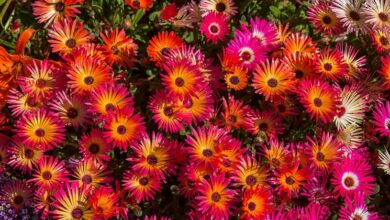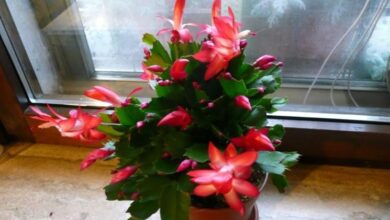Edible Aloe Vera Identification

From this article I want to thank the great reception and the follow-up that both this blog and the YouTube channel are having . Thanks to those people who follow my walk in the world of succulents, articles like this emerge. A colleague from the channel asked me:
… It is indicated in another channel, that aloe vera with orange/ red inflorescences are toxic and that those that are not and have medicinal properties are those of yellow color.
Could you give some guidance and provide clarity on this issue? Thanks a lot!
EE (Youtube)
The answer is yes. Aloe Vera or Aloe Vera leaf (Aloe Barbadensis Miller) has a yellow bloom, and this is the main variety of aloe that is grown and consumed for medicinal and aesthetic purposes.
There are more than 500 recognized species within the genus aloe and although not all are toxic, curiously, most of the toxic ones have orange or red blooms . But beware! Not all those with yellow flowers are edible.
What is Aloe Vera or Aloe Vera?
In case there is still some clueless person who does not know what type of plant is an Aloe Vera, or Aloe for my beloved Latin brothers, I will give you a brief introduction so that when we get into the matter it is easier to understand how to differentiate the different varieties.
Aloe vera is a super hardy and succulent semitropical plant, native to North Africa and the south-western Arabian Peninsula, however, today it can be found almost everywhere in the world. It is a plant that will grow very well in poor soils and in hot, dry places with many hours of light per year, but it can also grow as a houseplant near a window with bright natural light.
The reason this plant is so coveted is because of the gel in its leaves. This is commonly used topically to treat a myriad of skin conditions , ranging from hydration to healing second-degree burns.
Aloe Vera is possibly the oldest and most widely used medicinal plant in the world, since its registered medicinal use dates back historically to more than 2,000 years ago (if you are interested in knowing a little more about the history of the plant, do not hesitate to miss this article on this miracle plant ).
Today there is growing interest in the health benefits of Aloe vera juice, and as a result, some people are deciding to grow their own plants for that purpose. It is important to understand that there are different varieties of Aloe, but be careful! Not all of them are suitable for human consumption or to be applied to the skin.
In this article I want to focus on two varieties that are very similar and which are commonly confused. These are the Barbadensis Miller variety and the Chinensis ; with the risk involved in confusing them, since this writer has not been able to verify through any study that the Chinensis variety is optimal for human consumption.
What variety of Aloe Vera is edible?
There are more than one variety of Aloe that is commonly used for skin and hair care, no question about that. However, it is the Aloe Barbadensis Miller variety on which the most studies have been done and the one that has spread throughout the world as the most beneficial variety and I know it as the edible one.
Because of botanists, it is now more difficult to recognize Aloe Barbadensis Miller as «Aloe Vera» or «Sabila» since, according to them, these names are synonymous with:
- aloe vera
- Aloe Barbadensis
- Aloe Vera var. Barbadensis
- Aloe Vera var. Chinensis
In the real world, succulent lovers and growers differentiate the edible and inedible varieties of Aloe Vera in a much simpler way, even if it is not supposedly correct from an academic point of view.
Edible Aloe vera is called Aloe Vera Barbadensis, Aloe Barbadensis or Aloe Vera Barbadensis var. Miller. Inedible Aloe vera is called Aloe Vera var. Chinensis
How do we distinguish the different Aloe Vera plants?
Aloe Vera Barbadensis var. Miller has thick, broad and fleshy vertical leaves that are greenish in color that sometimes turn grayish-green due to the effects of light on its leaves, and produces yellow flowers .


Aloe vera barbadensis var. miller has a green to grayish-green color and a very distinctive circular rosette shape, with 3 leaves at the same height.


Here you can see the closest Aloe Vera Barbadensis Miller leaf, showing the thickness of the leaves:


Aloe Vera Barbadensis var. Miller showing the width of the leaves, very broad at the base seen from the underside:


The Aloe Vera Barbadensis var. Miller , shows the distinctive difference between young leaves stained with white spots on the underside and mature leaves, which have no spots.
The other fundamental characteristic is that it produces yellow flowers, different from the inedible variety ( var. Chinensis ) which has orange flowers. Below the characteristic yellow flower of the variety Barbadensis Miller:


The Aloe Vera var. Chinensis has less thick leaves, with many elongated spots, and produces orange flowers. This is the variety of Aloe vera that is commonly used to treat burns, as is the case with Barbadensis.


The Aloe Vera var. Chinensis has a deeper dark green color and a very different shape, somewhat flatter with stacked leaves, rather than clear rosettes. It shows that both mature and young leaves are spotted, and the markings on the leaves are maintained until maturity.
The Aloe Vera var. Chinensis produces orange flowers :


Identification through flowering
The yellow or orange tubular flowers of Aloe Vera plants grow high up on long stems in the spring and summer once the plants reach a certain level of maturity, usually when they are around three or four years old .
Aloe Barbadensis has yellow flowers and Aloe Chinensis orange.
Identification through the leaves
A more definitive way to identify the Aloe vera barbadensis Miller variety is by comparing young and mature leaves, they will look different.
The suckers (baby plants that grow on the sides of the mother plant) and the young leaves of the mature plants will be «spotted», will have some white or pale green markings, which will fade as the plant matures (in the case of the Barbadensis Miller ) .
With Aloe Vera var. Chinensis stained leaves will not change when mature, young and mature leaves look the same, the only difference being their size. The leaves are of a different color, rather a dark bluish green.
As a parallel comparison, I took this photo of a mature leaf of Aloe Vera var. Chinensis, against a mature leaf of Aloe Vera Barbadensis var. Miller.


On the left, a leaf of Aloe Vera var. Chinensis inedible, compared to a leaf of Aloe Vera Barbadensis var. Miller , edible. Note the difference in thickness, color, and markings on the blade.
Surely you have noticed how the Barbadensis variety has «dust» while the Chinensis variety shines … nope! This is not dust, but spray. The bloom is another characteristic that differentiates both varieties.




